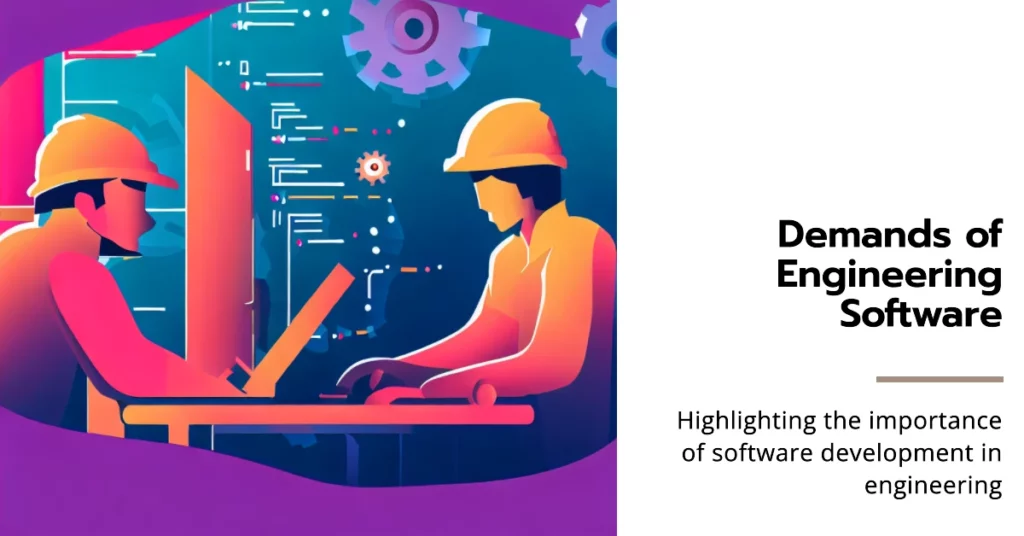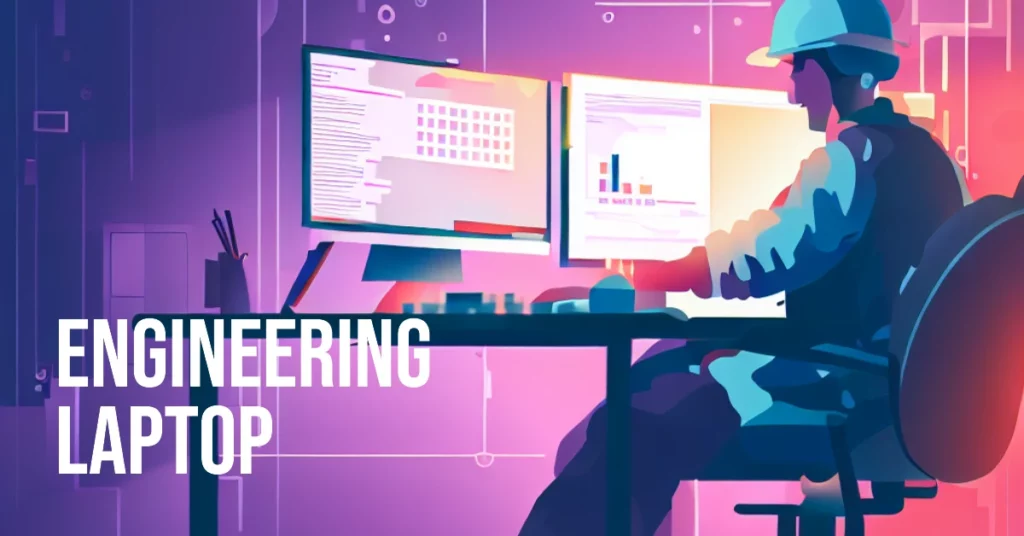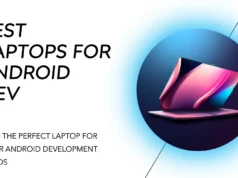Engineering courses are demanding. Not only do you have complex theories and practicals to wrestle with, but the software you’ll be using, from CAD tools to simulation programs, often requires some serious computing power. A regular consumer laptop might not just cut it.
Imagine being in the middle of a project, and your laptop starts lagging or, even worse, crashes. It’s not just about the inconvenience; it’s about work hours potentially lost, deadlines missed, and stress levels skyrocketing. You need something robust, reliable, and up to the task.
Our “Best Laptops for Engineering Students” guide comes here. We’ve meticulously researched, tested, and ranked the top laptops tailored to meet the rigorous demands of engineering studies, ensuring that you have the best tools at your fingertips. Let’s dive in and find the perfect tech companion for your academic journey.
The Demands of Engineering Software
In engineering, AutoCAD, SolidWorks, and MATLAB are indispensable tools, each catering to specific needs with distinct resource demands. Understanding these software and their associated resource requirements is crucial for efficient utilization.
AutoCAD is renowned for its prowess in 2D and 3D design. A system with a minimum of 8GB RAM is essential to harness its capabilities optimally. However, for complex projects, 16GB or more proves beneficial. A powerful multi-core CPU such as an Intel i5 or i7 is advisable, and a dedicated GPU ensures seamless rendering.
SolidWorks, a mainstay in 3D modeling, demands a robust infrastructure. For smooth operation, 16GB RAM is a baseline, but 32GB or more is preferable. A high-performance CPU like an Intel Xeon or AMD Ryzen Threadripper is vital, and a professional-grade GPU like NVIDIA Quadro enhances the experience significantly.
MATLAB, a computational powerhouse, thrives on memory. 8GB RAM is the minimum, but for data-intensive tasks, 16GB or 32GB is ideal. A fast CPU with multiple cores, such as an Intel Core i7 or AMD Ryzen 7, is advantageous. While GPU support is not mandatory, it accelerates certain operations, making it a valuable addition.
In addition, other engineering software such as ANSYS and CATIA have unique resource requirements. A comprehensive understanding of these tools and their hardware prerequisites empowers engineers to make informed choices, ensuring optimal performance and productivity in their design and analysis endeavors.
Key Features to Look for in a Laptop
When venturing into the engineering world, choosing your laptop becomes a pivotal decision. The right laptop can significantly boost productivity and efficiency when running resource-intensive engineering software. To make an informed choice, consider these key features crucial for a laptop tailored to engineering needs.
Processing Power: At the heart of every engineering laptop lies its processor. Opt for a laptop equipped with a high-performance CPU. Look for Intel Core i7 or AMD Ryzen processors with multiple cores to handle complex simulations and calculations effortlessly.
Ample RAM: Engineering software often demands substantial memory. A laptop with 16GB or more RAM is a smart investment, ensuring smooth multitasking and data handling.
Dedicated GPU: Graphics performance is vital for rendering and 3D modeling tasks. Seek a laptop with a dedicated GPU, ideally from NVIDIA’s GeForce, Quadro series, or AMD’s Radeon line.
Storage Speed: Faster storage options like SSDs (Solid State Drives) provide rapid data access, reducing load times and enhancing overall system responsiveness. Consider laptops with SSDs as your primary storage option.
Display Quality: A high-resolution IPS display with accurate color reproduction is essential for engineering tasks. A 15.6-inch or larger screen size offers a comfortable workspace.
Connectivity: Engineers often require various peripherals. Ensure your laptop has a variety of ports, including USB, HDMI, and Thunderbolt, to connect external devices easily.
Battery Life: Long-lasting battery life is beneficial, especially when working on the go or during field assignments. Look for laptops with at least 8 hours of battery endurance.
Build and Durability: Engineering environments can be demanding. A laptop with a sturdy build and military-grade durability ensures it can withstand challenging conditions.
Cooling System: To prevent overheating during prolonged usage, a laptop with an efficient cooling system, like heat pipes and multiple fans, is vital.
Operating System Compatibility: Verify that the laptop is compatible with the engineering software you plan to use, whether it’s Windows, macOS, or Linux.
Investing in a laptop with these key features ensures you have a reliable companion for your engineering endeavors, capable of handling the rigors of resource-intensive software with finesse.
Review Of The Best Laptops For Engineering Students
1. Acer Aspire 5 – Best Budget Option
When finding the best laptop for engineering students on a budget, the Acer Aspire 5 stands out as a top contender. This sleek and powerful laptop offers a winning combination of affordability and performance, making it the ideal choice for aspiring engineers.
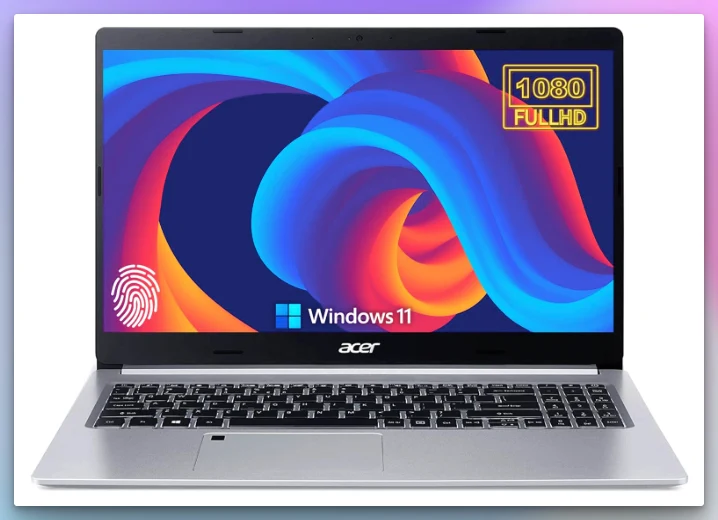
Performance Excellence: At its core, the Acer Aspire 5 boasts an AMD Ryzen 4-Core Processor that excels in handling the rigorous demands of engineering tasks. Whether running complex simulations or coding intricate algorithms, this laptop delivers the necessary processing power.
Abundant Memory: With a whopping 20GB of RAM, the Acer Aspire 5 provides ample memory for multitasking. You can effortlessly switch between engineering software, web research, and other tasks without encountering slowdowns.
Speedy Storage: Equipped with 1TB SSD Storage, this laptop offers generous space for your projects and ensures lightning-fast data access. Say goodbye to lengthy software loading times and hello to improved productivity.
Vivid Display: The laptop features a 15.6″ Full HD Display that showcases engineering diagrams and designs in stunning detail. The clarity and vibrant colors enhance your viewing experience, helping you work on complex projects with precision.
User-Friendly Features: Acer has thoughtfully included a Backlit Keyboard for late-night study sessions and a Fingerprint Login for added security. Plus, the laptop provides a range of ports, including HDMI, Ethernet Port, and Type-C, ensuring you have all the required connectivity options.
Windows 11 S: Running on Windows 11 S, this laptop offers a secure and efficient operating system, allowing you to focus on your engineering tasks without software-related distractions.
In summary, the Acer Aspire 5 is undeniably the best laptop for engineering students on a budget. It strikes the perfect balance between affordability and performance, making it a wise investment for students who want to excel in their engineering endeavors without straining their finances.
Whether tackling simulations, 3D modeling, or intensive coding projects, this laptop is up to the challenge, helping you reach your academic and professional goals.
Pros:-
Affordability: The Acer Aspire 5 offers impressive performance at a budget-friendly price point, making it accessible to students.
Strong Processor: With its AMD Ryzen 4-Core Processor, this laptop provides excellent processing power for engineering tasks, ensuring smooth performance.
Ample RAM: The generous 20GB of RAM allows for efficient multitasking and seamless operation of engineering software.
Fast SSD Storage: The 1TB SSD storage provides sufficient space and delivers speedy data access, reducing loading times.
Vivid Display: The 15.6″ Full HD display offers clear and vibrant visuals, making it ideal for detailed engineering work.
User-Friendly Features: Features like the backlit keyboard, fingerprint login, and various ports enhance user convenience and versatility.
Windows 11 S: Including Windows 11 S provides a secure and efficient operating system.
Cons:-
Limited Gaming Performance: While the laptop excels in engineering tasks, it may not be suitable for high-end gaming due to the limitations of its integrated GPU.
Non-Upgradeable RAM: The RAM is soldered onto the motherboard, meaning it cannot be upgraded in the future. This could be a drawback for those who want to expand their memory later.
Windows 11 S Restrictions: Windows 11 S mode restricts the installation of apps only from the Microsoft Store, which may limit software choices for some users.
Average Battery Life: The battery life, while decent, may not be sufficient for prolonged use without access to a power source.
Lack of Dedicated Graphics: For tasks heavily reliant on GPU performance, such as intensive 3D rendering, the absence of a dedicated GPU may be a limitation.
In conclusion, the Acer Aspire 5 is an excellent choice for engineering students on a budget, offering impressive performance and features at an affordable price.
However, it may have limitations in terms of gaming, RAM upgradability, and GPU performance, depending on the user’s specific needs. Careful consideration of these pros and cons will help students make an informed decision based on their priorities and requirements.
2. Lenovo IdeaPad
When navigating the demanding landscape of engineering studies without breaking the bank, the Lenovo IdeaPad emerges as a frontrunner, redefining student affordability and performance.
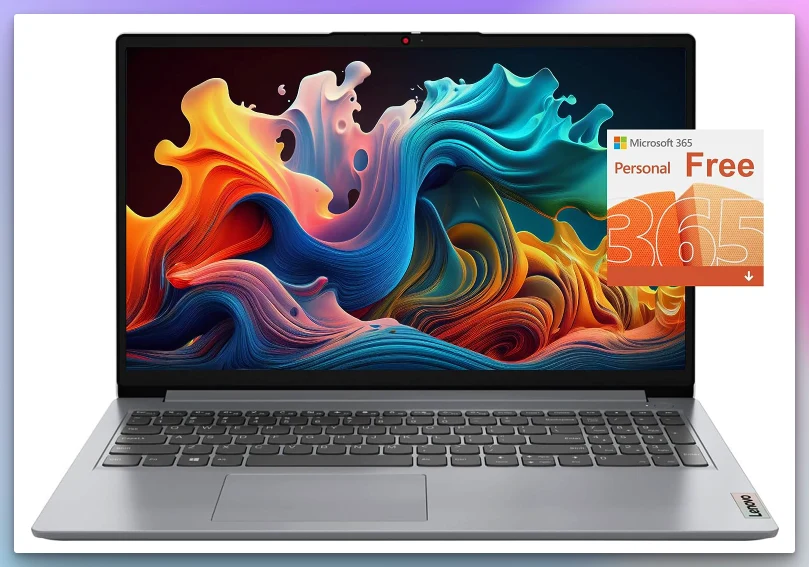
Processing Prowess: At its core, the Lenovo IdeaPad harnesses the capabilities of an AMD Dual-core Processor, a formidable choice for the budget-conscious engineer. This processor may be dual-core, but it offers commendable processing power, handling complex calculations and simulations with finesse.
20GB RAM: Engineering students require ample memory for multitasking and running resource-intensive software. With a substantial 20GB RAM, this laptop provides a spacious playground for your applications, ensuring you can seamlessly juggle between tasks.
1TB SSD: The Lenovo IdeaPad boasts a blazing-fast 1TB SSD, ensuring swift data access and reduced software loading times. This storage capacity is sufficient to house your engineering projects without compromising speed.
HD Anti-Glare Display: The 15.6-inch HD Anti-Glare Display minimizes reflections and offers a comfortable visual experience for those long study sessions. Engineering diagrams and schematics come to life with crisp clarity.
Extended Battery Life: The laptop’s long battery life of up to 9.5 hours keeps you productive on the go, whether in class, the library, or the field.
Versatile Connectivity: An HDMI port and an SD Card Reader expand your connectivity options, making it easier to link up with external devices and transfer data effortlessly.
Windows 11: Running on Windows 11, the Lenovo IdeaPad ensures a modern and secure operating system to complement your engineering journey.
In summary, the Lenovo IdeaPad is one of the best laptops for engineering students on a budget. It’s a testament to the notion that affordability need not equate to compromise.
With a robust processor, abundant RAM, fast SSD storage, and a host of practical features, this laptop is poised to empower engineering students to excel in their academic pursuits without financial constraints. Whether immersed in complex simulations, CAD designs, or programming, the Lenovo IdeaPad is your trusted ally on the path to engineering greatness.
Pros:-
Affordability: The Lenovo IdeaPad offers impressive performance at an attractive price point, making it an excellent choice for budget-conscious engineering students.
20GB RAM: The substantial RAM ensures smooth multitasking and efficient operation of engineering software, enhancing productivity.
1TB SSD: The fast SSD storage provides ample space for projects and delivers quick data access, reducing software loading times.
HD Anti-Glare Display: The 15.6-inch HD anti-glare display offers clear visuals and reduces eye strain during extended study sessions.
Long Battery Life: With a battery life of up to 9.5 hours, the laptop is well-suited for all-day use without frequent recharging.
Versatile Connectivity: An HDMI port and an SD card reader offer flexibility in connecting external devices and transferring data.
Windows 11: On Windows 11, the laptop provides a modern and secure operating system.
Cons:-
Dual-Core Processor: While the AMD dual-core processor is capable, it may not handle extremely demanding engineering tasks as efficiently as quad-core or higher processors.
Integrated Graphics: The laptop relies on integrated graphics, which may not be suitable for graphics-intensive engineering applications or gaming.
Limited Upgradability: Some components, such as the processor and graphics, may not be upgradeable, limiting the laptop’s future-proofing potential.
HD Display: While adequate, some users may prefer a higher-resolution screen for more detailed work.
Windows 11 Limitations: Windows 11 S mode restricts app installations to the Microsoft Store, potentially limiting software choices.
In conclusion, the Lenovo IdeaPad offers a compelling package for engineering students on a budget, with its generous RAM, fast storage, and user-friendly features.
However, its dual-core processor and integrated graphics may pose limitations for students engaging in extremely demanding tasks. Considering these pros and cons will help students determine if the Lenovo IdeaPad aligns with their academic and budgetary needs.
3. Apple MacBook Pro M2 – Best Premium Option
In the realm of laptops tailored for engineering students, the Apple MacBook Pro M2 stands as an unrivaled masterpiece, redefining the very essence of what the best laptops for engineering students should encompass.
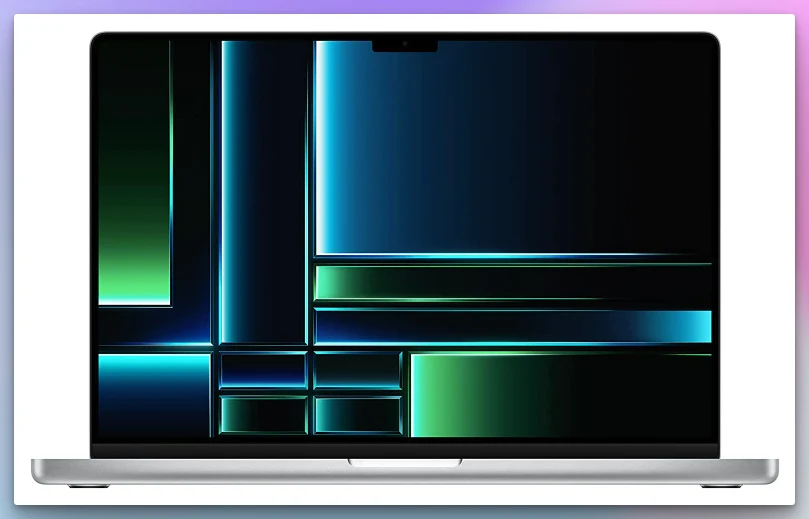
Unmatched Processing Power: At its core, the MacBook Pro M2 boasts the revolutionary M2 Pro chip, wielding a 12-core CPU that sets new benchmarks in processing power. This 12-core CPU is the beating heart of engineering excellence, effortlessly tackling the most intricate simulations and calculations, setting the stage for innovation.
Superior Graphics Performance: Complementing the CPU is an awe-inspiring 19-core GPU, offering unparalleled graphics performance. Whether immersed in rendering complex 3D models or navigating virtual simulations, the MacBook Pro M2’s GPU delivers an exceptional visual experience.
Stunning Liquid Retina XDR Display: The laptop features a captivating 16.2-inch Liquid Retina XDR Display, a canvas with vibrant colors and extreme clarity. For engineering students, this display is a portal into the intricate world of schematics and CAD designs, providing the detail required for precision.
Efficient Unified Memory: With 16GB of Unified Memory, the MacBook Pro M2 ensures smooth multitasking and optimal memory management. Engineering software coexists harmoniously, even under the pressure of resource-intensive applications.
Lightning-Fast SSD Storage: With a 1TB SSD, this laptop guarantees swift data access, reducing software loading times and facilitating rapid project iterations.
Seamless Ecosystem Integration: The MacBook Pro M2 seamlessly integrates with iPhone and iPad, creating a unified ecosystem that enhances productivity and simplifies data sharing, a boon for engineering projects.
Elegant Silver Design: Wrapped in an elegant Silver finish, the MacBook Pro M2 is a testament to Apple’s design excellence, making it a powerful tool and a style statement for discerning engineering students.
The Apple MacBook Pro M2 isn’t just a laptop; it embodies engineering aspirations. It’s a testament to cutting-edge technology, immense power, and an unwavering commitment to precision.
It is, without a doubt, the ultimate choice for those who aspire to engineer the future. With the MacBook Pro M2, you’re not just selecting a laptop but forging a partnership with engineering greatness.
Pros:-
Exceptional Processing Power: The MacBook Pro M2’s M2 Pro chip with a 12-core CPU delivers unparalleled processing power, easily handling the most demanding engineering tasks.
Impressive GPU Performance: With a 19-core GPU, this laptop offers outstanding graphics performance, crucial for tasks like 3D modeling and simulations.
Stunning Liquid Retina XDR Display: The 16.2-inch Liquid Retina XDR Display provides vibrant colors and extreme clarity, enhancing the visual experience for engineering projects.
Ample Unified Memory: 16GB of Unified Memory ensures seamless multitasking and efficient memory management, allowing for the smooth operation of resource-intensive applications.
Swift SSD Storage: The 1TB SSD storage offers lightning-fast data access, reducing software loading times and facilitating rapid project iterations.
Ecosystem Integration: The MacBook Pro M2 seamlessly integrates with other Apple devices, streamlining workflows and enhancing productivity.
Sleek and Stylish Design: Apple’s signature design excellence is evident in the MacBook Pro M2’s elegant Silver finish, making it both a powerful tool and a fashion statement.
Cons:-
High Price Point: The MacBook Pro M2 is a premium laptop, and its top-tier performance comes with a correspondingly high price tag, which may be a budgetary constraint for some students.
Limited Software Compatibility: While macOS offers a robust software ecosystem, some engineering-specific software may be better supported on Windows, requiring workarounds or virtualization.
Limited Ports: The laptop’s port selection is limited, featuring primarily USB-C ports, which may require adapters for legacy peripherals.
Heavier and Bulkier: The MacBook Pro M2’s larger 16.2-inch display makes it bulkier and heavier than smaller laptops, which could affect portability for some users.
Learning Curve: Shifting from other operating systems to macOS may require a learning curve for some users, although Apple’s user-friendly interface can help ease the transition.
In summary, the Apple MacBook Pro M2 is an engineering powerhouse with top-tier performance and a stunning display, making it an excellent choice for engineering students.
However, its premium price, limited software compatibility, and port selection may not be suitable for everyone. Considering these pros and cons will help students determine if the MacBook Pro M2 aligns with their needs and budget.
4. ASUS ROG Strix G16 – Best Overall
When selecting the best laptop for engineering students, the ASUS ROG Strix G16 emerges as a formidable choice that transcends conventional boundaries. With cutting-edge technology and relentless innovation, this gaming laptop is an unexpected yet exceptional ally for engineering enthusiasts.
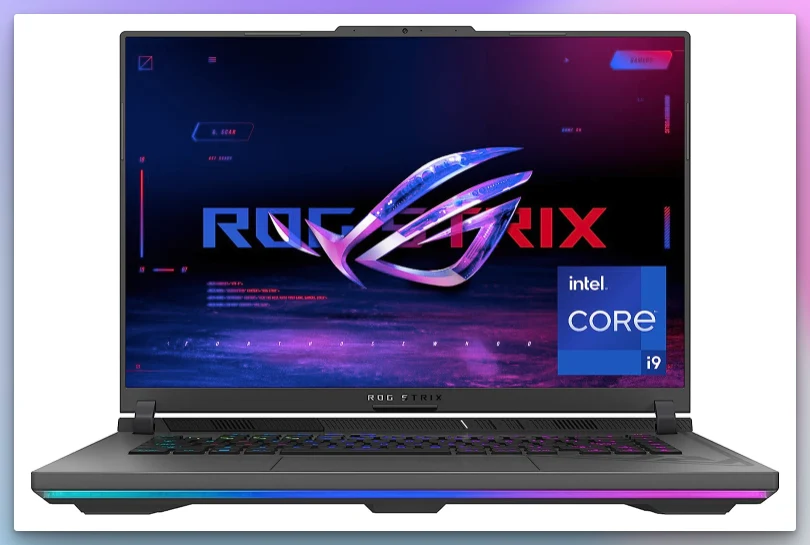
High-Performance Powerhouse: Beneath its sleek Eclipse Gray exterior, the ASUS ROG Strix G16 conceals the formidable prowess of an Intel Core i9-13980HX processor. This high-performance CPU is engineered to tackle complex engineering simulations and data-intensive tasks with finesse, setting a new standard for computational power.
GeForce RTX 4070 Graphics: At the heart of this laptop resides the powerful GeForce RTX 4070, a graphics card that unlocks a world of visual possibilities. While designed for gaming, this GPU provides exceptional support for GPU-accelerated engineering software, enhancing rendering and 3D modeling experiences.
16″ 16:10 FHD 165Hz Display: The ASUS ROG Strix G16 features a 16-inch 16:10 Full HD display with a 165Hz refresh rate. This immersive screen offers a wider workspace, ideal for multitasking on complex engineering projects, and provides fluid visuals for precise design work.
16GB DDR5 Memory: With 16GB of DDR5 memory, this laptop ensures swift data access and smooth multitasking, making it a reliable partner for running resource-intensive engineering applications.
1TB PCIe SSD Storage: The laptop’s 1TB PCIe SSD storage accommodates your engineering projects and ensures rapid data access, reducing software loading times and enhancing overall efficiency.
Wi-Fi 6E Connectivity: The inclusion of Wi-Fi 6E guarantees fast and reliable internet connectivity, crucial for online research, collaboration, and remote learning.
Windows 11: Running on Windows 11, the ASUS ROG Strix G16 provides a modern and secure operating system that complements the laptop’s cutting-edge hardware.
In summary, the ASUS ROG Strix G16 defies traditional gaming laptop boundaries to become an unexpected but outstanding choice for engineering students.
Its powerful processor, exceptional graphics, immersive display, and ample memory and storage make it a versatile, high-performance tool for tackling the most demanding engineering tasks. It’s not just a gaming laptop; it’s a gateway to engineering excellence.
Pros:-
High-Performance Processor: The Intel Core i9-13980HX processor provides formidable computing power, ideal for running complex engineering simulations and applications.
Powerful GPU: The GeForce RTX 4070 graphics card enhances visual experiences, benefiting GPU-accelerated engineering software, including rendering and 3D modeling tasks.
Large and Immersive Display: The 16-inch 16:10 Full HD display with a 165Hz refresh rate offers a spacious and fluid workspace, perfect for multitasking and precision design work.
Ample DDR5 Memory: With 16GB of DDR5 memory, the laptop ensures efficient multitasking and data handling, contributing to the smooth operation of engineering applications.
Fast PCIe SSD Storage: The 1TB PCIe SSD storage provides quick data access, reducing software loading times and enhancing overall productivity.
Wi-Fi 6E: Wi-Fi 6E connectivity offers high-speed and reliable internet access, crucial for online research, collaboration, and remote learning.
Modern Operating System: Windows 11 provides a secure and up-to-date operating system, complementing the laptop’s advanced hardware.
Cons:-
Gaming-Centric Design: While the ASUS ROG Strix G16 excels in performance, its gaming-centric design may not appeal to all engineering students, as it’s bulkier and heavier than traditional laptops.
Shorter Battery Life: High-performance components often result in shorter battery life. This laptop may require frequent recharging, limiting its portability.
Potentially Overkill for Some Tasks: The laptop’s powerful hardware may be overkill for certain engineering students who don’t require such extreme performance and may not fully utilize its capabilities.
Higher Price Point: The advanced hardware and features come with a higher price tag, which may be a limiting factor for students on a tight budget.
Lack of Professional Certifications: Some engineering software may require professional GPU certifications, which gaming GPUs like the GeForce RTX 4070 may not possess.
The ASUS ROG Strix G16 is a high-performance laptop with significant advantages for engineering students. However, its gaming-oriented design, shorter battery life, potential overkill for some tasks, higher cost, and lack of professional certifications are factors to consider when evaluating its suitability for individual needs.
It excels in raw performance but may not be the perfect fit for all engineering students, depending on their specific requirements and preferences.
5. Microsoft Surface Book 3
When selecting the ideal tool for engineering students, the Microsoft Surface Book 3 emerges as a frontrunner, embodying the essence of what the best laptops for engineering students should entail.
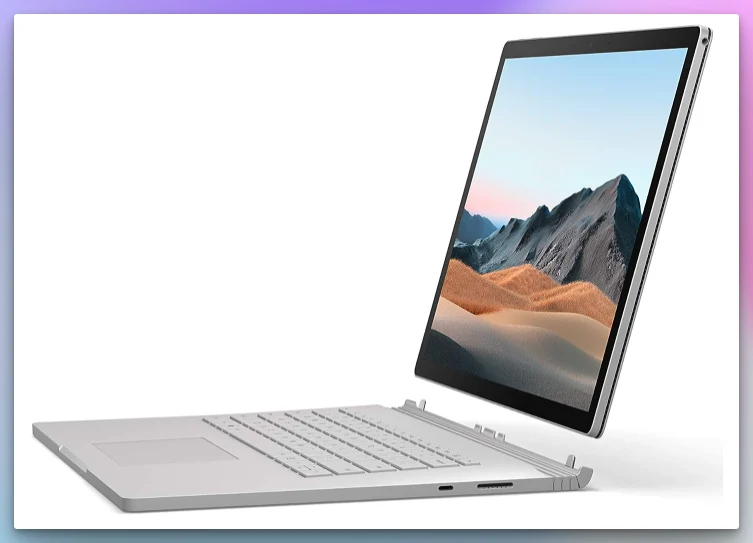
Versatile 2-in-1 Design: The Surface Book 3’s hallmark feature is its versatile 2-in-1 design that seamlessly transforms from a powerful laptop to a detachable tablet. This adaptability is invaluable for engineers who require both a traditional laptop setup and a portable tablet for on-the-go productivity.
10th Gen Intel Core i7: Fueling this engineering marvel is the 10th Gen Intel Core i7 processor. This high-performance CPU stands ready to tackle intricate simulations and data-intensive computations with remarkable precision and speed.
15″ Touch-Screen Display: The laptop boasts a captivating 15″ touch-screen display that facilitates interactive design and modeling. Engineers can easily sketch, annotate, and manipulate schematics, enhancing the creative process.
16GB Memory: With 16GB of memory, the Surface Book 3 offers ample room for multitasking, ensuring the smooth operation of resource-hungry engineering software.
256GB SSD Storage: The laptop’s 256GB SSD storage ensures rapid data access, significantly reducing load times for software applications and projects.
Windows Precision Trackpad and Surface Pen Support: The precision trackpad and Surface Pen support provide engineers with a highly responsive and intuitive interface for precise control and annotation.
Long Battery Life: Boasting an impressive battery life, the Surface Book 3 ensures that engineering students can remain productive throughout their demanding schedules, whether in lectures, labs, or the field.
The Microsoft Surface Book 3 is a testament to versatility and power. Its 2-in-1 design, potent Intel Core i7 processor, expansive touch-screen display, generous memory, and responsive interface, positions it as an impeccable choice for engineering students.
This laptop embodies adaptability and performance, empowering engineers to reach new heights in their academic and professional pursuits. With the Surface Book 3, the future of engineering is at your fingertips.
Pros:-
Versatile 2-in-1 Design: The Surface Book 3’s ability to transform from a laptop to a tablet provides versatility for various engineering tasks and scenarios.
High-Performance Processor: The 10th Gen Intel Core i7 processor delivers powerful computing capabilities, suitable for demanding engineering simulations and calculations.
Large Touch-Screen Display: The 15″ touch-screen display facilitates interactive design and modeling, offering engineers a creative and intuitive workspace.
Ample Memory: With 16GB of memory, the laptop supports efficient multitasking, ensuring the smooth operation of resource-intensive engineering software.
Fast SSD Storage: The 256GB SSD storage guarantees quick data access, reducing software loading times and enhancing overall productivity.
Windows Precision Trackpad and Surface Pen Support: The precision trackpad and Surface Pen support provide engineers with precise control and annotation capabilities.
Long Battery Life: The laptop’s battery life ensures sustained daily productivity, making it suitable for lectures, labs, and fieldwork.
Cons:-
Price: The Surface Book 3 is relatively expensive, which may be a limiting factor for budget-conscious engineering students.
Heavier Than Traditional Laptops: Due to its 2-in-1 design and detachable tablet, the Surface Book 3 is heavier and bulkier than traditional laptops, which could affect portability.
Limited GPU Options: The laptop may not offer high-end dedicated graphics options, which could be a drawback for tasks requiring significant GPU performance.
Limited Storage Capacity: The 256GB SSD may be insufficient for engineering students with extensive project files, necessitating external storage solutions.
Potential for Reliability Issues: Some users have reported issues with the detachable mechanism and hardware components, which could impact long-term reliability.
In conclusion, the Microsoft Surface Book 3 offers a compelling package for engineering students, combining versatility, performance, and a touch-screen interface. However, its price, bulkier design, limited GPU options, and potential reliability concerns should be considered when evaluating its suitability for individual needs and preferences.
It excels in adaptability and power, making it an excellent choice for certain engineering tasks, but it may not be the perfect fit for all students.
6. Dell XPS 17 9720
When the pursuit of engineering excellence requires a laptop that goes beyond the ordinary, the Dell XPS 17 9720 emerges as the epitome of what the best laptops for engineering students should be.
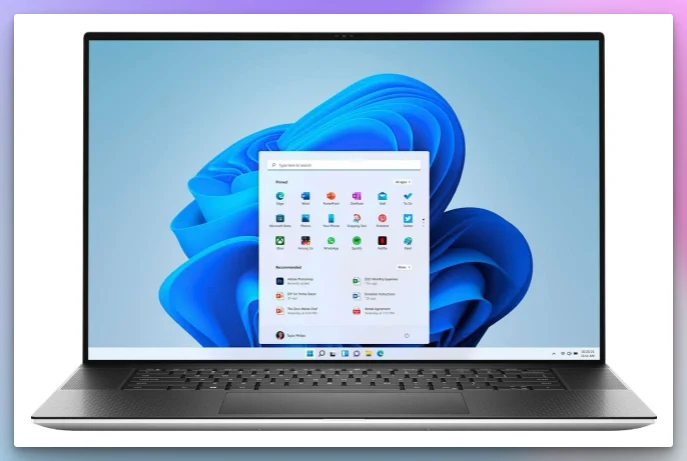
Powerhouse Performance: At the heart of this engineering marvel is the 14-core 12th Intel Core i7-12700H processor, a computational juggernaut that ignites the spark of innovation. With this processor’s prowess, complex simulations and data-intensive calculations are executed with breathtaking speed and precision.
NVIDIA RTX 3060 Graphics: Including the NVIDIA RTX 3060 with 6GB GDDR6 elevates visual experiences to new heights. Whether delving into CAD designs or harnessing the power of GPU-accelerated engineering software, this laptop ensures unparalleled graphics performance.
UHD+ Touchscreen Display: The laptop boasts a captivating 17″ UHD+ touchscreen display that blurs the line between work and artistry. With its exceptional clarity and touch capabilities, engineers can interact with their designs and models unimaginably.
64GB DDR5 Memory: With a staggering 64GB of DDR5 memory, multitasking becomes second nature. The laptop juggles multiple engineering applications effortlessly, providing a seamless and efficient workflow.
4TB NVMe SSD Storage: The colossal 4TB NVMe SSD storage accommodates vast engineering projects and ensures swift data access, reducing loading times and expediting the creative process.
Thunderbolt 4 and WiFi 6E: Including Thunderbolt 4 and WiFi 6E connectivity options ensures lightning-fast data transfer and reliable network connectivity, which is vital for collaborative engineering work.
Windows 11 Pro: Running on Windows 11 Pro, the Dell XPS 17 9720 provides a secure and feature-rich operating system that complements the laptop’s advanced hardware.
In conclusion, the Dell XPS 17 9720 transcends conventional boundaries to become an unparalleled companion for engineering students. Its powerhouse performance, stunning visuals, expansive touchscreen display, colossal memory and storage, and cutting-edge connectivity options redefine what’s possible in engineering laptops.
This is not just a laptop; it’s an instrument for engineering greatness, a canvas for innovation, and a tool for transforming ideas into reality. With the Dell XPS 17 9720, the future of engineering is yours to create.
Pros:-
Exceptional Performance: The 14-core 12th Intel Core i7-12700H processor delivers powerhouse performance, perfect for handling complex engineering simulations and computations.
High-End GPU: The NVIDIA RTX 3060 graphics card with 6GB GDDR6 provides outstanding graphics performance, crucial for GPU-accelerated engineering software and tasks.
Impressive UHD+ Touchscreen Display: The 17″ UHD+ touchscreen display offers exceptional clarity and touch capabilities, enhancing interactive design and modeling experiences.
Ample DDR5 Memory: With a generous 64GB of DDR5 memory, the laptop supports seamless multitasking and efficient memory management, crucial for engineering applications.
Massive NVMe SSD Storage: The colossal 4TB NVMe SSD storage ensures ample space for engineering projects and rapid data access, reducing software loading times.
Thunderbolt 4 and WiFi 6E: Thunderbolt 4 and WiFi 6E provide high-speed data transfer and reliable network connectivity, facilitating collaboration and research.
Windows 11 Pro: Windows 11 Pro offers a secure and feature-rich operating system that complements the laptop’s advanced hardware.
Cons:-
Price: The Dell XPS 17 9720 is a premium laptop, which may be out of reach for budget-conscious engineering students.
Bulkier and Heavier: Due to its powerful components and larger display, the laptop is bulkier and heavier than more portable options, potentially impacting mobility.
Shorter Battery Life: High-performance components often result in shorter battery life, requiring frequent recharging for all-day use.
Potential Overkill: The laptop’s extreme performance may be more than necessary for some engineering students, leading to underutilizing its capabilities.
Limited Upgrade Options: Some components may not be easily upgradeable, limiting the laptop’s long-term adaptability.
In summary, the Dell XPS 17 9720 is a formidable laptop with exceptional performance and a stunning display, making it an excellent choice for engineering students with demanding computational needs.
However, its premium price, bulkier design, shorter battery life, and potential for overkill should be considered when evaluating its suitability for individual requirements and budget constraints. It excels in power and versatility, making it a top contender for engineering tasks, but it may not be the perfect fit for all students.
7. HP Envy X360 – Best 2-in-2 Option
Regarding versatility and performance in the realm of 2-in-1 laptops for engineering students, the HP Envy X360 is a testament to innovation and adaptability.
AMD Ryzen 7 5825U Processor: At its core, the HP Envy X360 is powered by the AMD Ryzen 7 5825U processor, a computing marvel that effortlessly handles engineering simulations and calculations. This processor’s prowess ensures that complex tasks are executed precisely and efficiently.
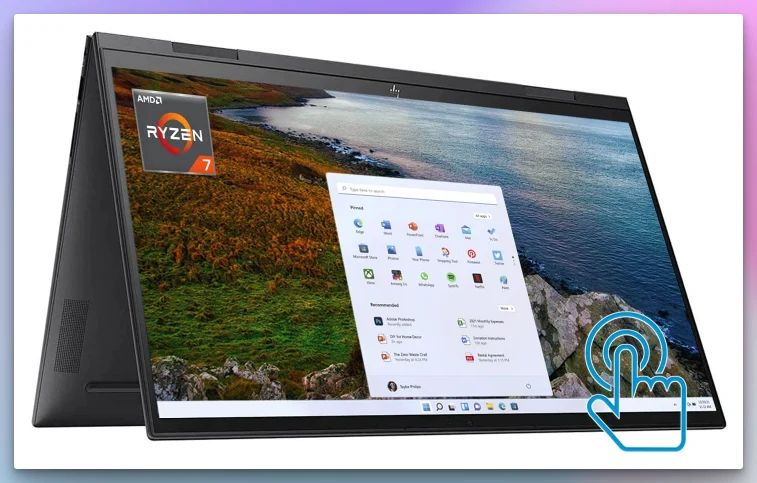
15.6″ IPS Touchscreen: The laptop features a generous 15.6″ IPS touchscreen display, offering engineers a vivid and interactive canvas. It’s a versatile workspace where concepts come to life with a touch, making it ideal for design, sketching, and annotation.
32GB RAM: With a substantial 32GB of RAM, the HP Envy X360 ensures seamless multitasking, a crucial factor in engineering where multiple applications and datasets often need to be juggled simultaneously.
1TB PCIe SSD: The 1TB PCIe SSD storage provides ample space for engineering projects and guarantees swift data access. Reduced loading times mean more time for actual work.
Backlit Keyboard and Fingerprint Reader: The laptop boasts a backlit keyboard for extended working hours and a fingerprint reader for secure and convenient login.
Wi-Fi 6 and Audio by Bang & Olufsen: Equipped with Wi-Fi 6, the laptop ensures fast and reliable internet connectivity, crucial for research and collaboration. The audio experience is enhanced with Bang & Olufsen, providing immersive sound quality for multimedia presentations and simulations.
Windows 11: On Windows 11, the HP Envy X360 offers a modern and secure operating system that complements its advanced hardware.
The HP Envy X360 redefines what 2-in-1 laptops can achieve for engineering students. Its powerful processor, large and interactive touchscreen display, generous memory and storage, and convenient features make it an excellent choice for versatility and productivity.
This is not just a laptop; it’s a tool that adapts to your engineering needs, whether sketching designs, running simulations, or collaborating with peers. With the HP Envy X360, the possibilities are as flexible as their form.
Pros:-
Versatile 2-in-1 Design: The HP Envy X360’s 2-in-1 design allows engineers to switch between laptop and tablet modes, providing flexibility for various tasks and environments.
Powerful AMD Ryzen Processor: The AMD Ryzen 7 5825U processor delivers robust performance for handling complex engineering simulations and calculations.
Large IPS Touchscreen Display: The 15.6″ IPS display offers an interactive and spacious workspace, ideal for design work, sketching, and annotation.
Generous RAM: With 32GB of RAM, the laptop supports seamless multitasking, ensuring the smooth operation of multiple engineering applications.
Ample PCIe SSD Storage: The 1TB PCIe SSD storage provides space for engineering projects and ensures fast data access, reducing software loading times.
Backlit Keyboard and Fingerprint Reader: The backlit keyboard enhances productivity in low-light conditions, and the fingerprint reader offers a secure and convenient login.
Wi-Fi 6 and Audio by Bang & Olufsen: Wi-Fi 6 ensures high-speed and reliable internet connectivity, while Audio by Bang & Olufsen delivers immersive sound quality.
Windows 11: Windows 11 provides a modern and secure operating system, enhancing the overall user experience.
Cons:-
Integrated Graphics: The laptop relies on integrated graphics, which may not deliver the same level of performance as dedicated GPUs for GPU-intensive engineering tasks.
Lack of Dedicated Number Pad: Some engineering students may miss having a dedicated number pad for data entry and calculations.
Weight and Size: While versatile, the 15.6″ display makes the laptop bulkier and heavier than more compact options, potentially affecting portability.
Battery Life: High-performance components can lead to shorter battery life, requiring more frequent recharging for extended use.
Limited Configuration Options: The laptop may have limited options for customization and upgrades compared to other models.
The HP Envy X360 offers a versatile and powerful package for engineering students. Its 2-in-1 design, powerful processor, large touchscreen display, ample memory and storage, and convenient features make it a strong contender.
However, its reliance on integrated graphics, bulkier size, and potential for shorter battery life should be considered when evaluating its suitability for individual needs and preferences. It excels in adaptability and productivity, making it an excellent choice for versatile engineering tasks, but it may not be the perfect fit for all students.
8. HP Envy 17T
When selecting the best HP laptop for engineering students, the HP Envy 17T emerges as a pinnacle of performance and innovation. This premium laptop redefines what’s possible in the world of engineering technology.
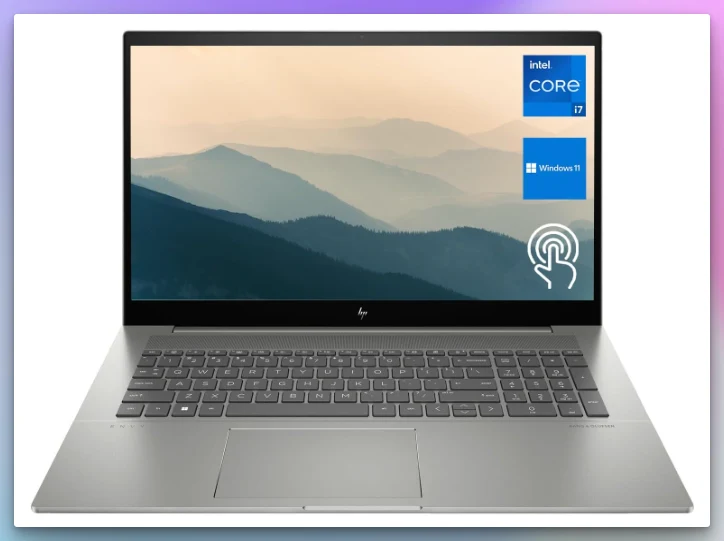
Intel Core i7-13700H Processor: At the heart of the HP Envy 17T is the formidable Intel Core i7-13700H processor, designed to handle the most intricate engineering tasks with unparalleled efficiency and speed. Whether running simulations or crunching data, this processor delivers exceptional performance.
17.3″ FHD Touchscreen Display: The laptop boasts a spacious 17.3″ FHD touchscreen display that offers a canvas for creativity and precision. Engineers can sketch, design, and interact with their projects intuitively and immersively.
32GB RAM: With a substantial 32GB of RAM, the HP Envy 17T ensures smooth multitasking, allowing engineers to switch between resource-intensive applications without slowdowns.
2TB SSD Storage: The massive 2TB SSD storage provides ample space for engineering projects, software, and data. It not only ensures fast data access but also reduces loading times.
Windows 11 Home: Running on Windows 11 Home, the laptop offers a modern and secure operating system that complements its advanced hardware, enhancing the overall user experience.
Wi-Fi 6: Equipped with Wi-Fi 6 technology, the laptop guarantees fast and reliable internet connectivity, essential for online research, collaboration, and remote learning.
Backlit Keyboard: The backlit keyboard enhances productivity in low-light environments, ensuring you can work comfortably even in dimly lit spaces.
In summary, the HP Envy 17T redefines what HP laptops can offer to engineering students. Its powerful processor, spacious and interactive touchscreen display, generous memory and storage, and advanced features make it an exceptional choice for versatility and productivity.
This is not just a laptop; it’s a tool that empowers engineers to explore new horizons, visualize concepts, and solve complex problems. With the HP Envy 17T, the future of engineering is at your fingertips.
Pros:-
Powerful Intel Core i7 Processor: The Intel Core i7-13700H processor provides robust performance, making it well-suited for complex engineering tasks and simulations.
Large Touchscreen Display: The spacious 17.3″ FHD touchscreen display offers a versatile and interactive workspace for engineers, enhancing design, sketching, and modeling experiences.
Ample RAM: With 32GB of RAM, the laptop supports seamless multitasking, simultaneously ensuring the smooth operation of multiple engineering applications.
Massive SSD Storage: The 2TB SSD storage provides ample space for engineering projects and ensures rapid data access, reducing software loading times.
Windows 11 Home: Running on Windows 11 Home, the laptop offers a modern and secure operating system, enhancing the overall user experience.
Wi-Fi 6: Wi-Fi 6 technology ensures fast and reliable internet connectivity, which is crucial for online research, collaboration, and remote learning.
Backlit Keyboard: The backlit keyboard enhances productivity in low-light environments, making it suitable for late-night study sessions.
Cons:-
Size and Weight: Due to its larger display, the HP Envy 17T is bulkier and heavier than more compact laptops, potentially affecting portability.
Shorter Battery Life: High-performance components often result in shorter battery life, which may require more frequent recharging for extended use.
Price: This premium laptop may be relatively expensive, which could be a limitation for budget-conscious engineering students.
Lack of Dedicated GPU: The laptop relies on integrated graphics, which may not deliver the same level of performance as dedicated GPUs for GPU-intensive engineering tasks.
Limited Configuration Options: The laptop may have limited options for customization and upgrades compared to other models.
In conclusion, the HP Envy 17T offers engineering students a powerful and feature-rich package. Its large touchscreen display, generous memory and storage, and advanced features make it a compelling choice for productivity and versatility.
However, its size, weight, potential for shorter battery life, price, and lack of a dedicated GPU should be considered when evaluating its suitability for individual needs and preferences. It excels in performance and innovation, making it a top contender for engineering tasks, but it may not be the perfect fit for all students.
9. MSI Thin GF63
When it comes to empowering the engineering minds of tomorrow, the MSI Thin GF63 steps into the limelight as one of the best laptops for engineering students. With cutting-edge technology and innovative features, it’s a formidable tool that engineers can rely on to excel academically.
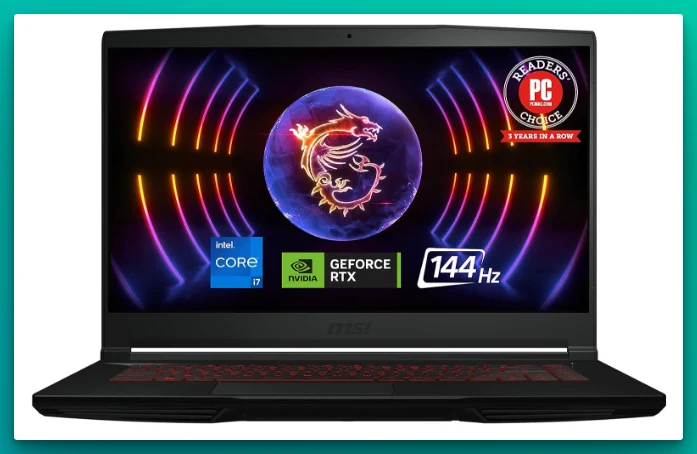
12th Gen Intel Core i7 Processor: At its core, the MSI Thin GF63 is driven by the powerful 12th Gen Intel Core i7 processor. This computational marvel can effortlessly handle the most demanding engineering simulations and computations with precision and efficiency.
NVIDIA GeForce RTX 4050 Graphics: The laptop is equipped with the NVIDIA GeForce RTX 4050, a graphics card that pushes the boundaries of visual computing. It’s not just about gaming; it’s about harnessing the GPU’s power for engineering tasks that require intense graphical processing.
High-Speed DDR4 Memory: With 16GB of DDR4 memory, the laptop ensures smooth multitasking and data handling. Engineers can seamlessly transition between various applications, enhancing productivity.
512GB NVMe SSD: The 512GB NVMe SSD storage provides ample space for engineering projects and guarantees swift data access, reducing software loading times.
Cooler Boost 5: The Cooler Boost 5 cooling technology keeps the laptop’s temperature in check, even during heavy workloads. This is essential for maintaining consistent performance during extended engineering sessions.
144Hz Display: The laptop features a high-refresh-rate 144Hz display, offering a smoother visual experience. It’s not just about gaming but the fluidity it brings to engineering design and modeling.
Type-C Connectivity: With Type-C connectivity, engineers can use fast data transfer and versatile connectivity options, streamlining connecting to peripherals and external devices.
Windows 11 Home: Running on Windows 11 Home, the MSI Thin GF63 offers a secure and feature-rich operating system that complements the laptop’s advanced hardware.
The MSI Thin GF63 is a gateway to unleashing engineering potential. Its powerful processor, high-end graphics, generous memory and storage, innovative cooling technology, high-refresh-rate display, and modern operating system make it an exceptional choice for engineering students.
This is not just a laptop; it’s a catalyst for innovation, a canvas for design, and a platform for computational excellence. With the MSI Thin GF63, the future of engineering is within reach.
Pros:-
Powerful Intel Core i7 Processor: The 12th Gen Intel Core i7 processor delivers exceptional performance, easily handling complex engineering simulations and calculations.
Dedicated NVIDIA GeForce RTX 4050 Graphics: The dedicated GPU provides high-quality graphics performance, essential for tasks that require intensive graphical processing in engineering software.
Fast DDR4 Memory: With 16GB of DDR4 memory, the laptop supports seamless multitasking and data handling, enhancing productivity during engineering tasks.
Swift NVMe SSD Storage: The 512GB NVMe SSD storage ensures rapid data access and reduced software loading times, improving overall workflow efficiency.
Cooler Boost 5: The Cooler Boost 5 cooling technology helps maintain the laptop’s temperature during heavy workloads, ensuring consistent performance during extended engineering sessions.
High-Refresh-Rate Display: The 144Hz display provides a smoother visual experience, benefiting engineering design, modeling, and overall user comfort.
Type-C Connectivity: Type-C connectivity offers fast data transfer and versatile connectivity options, making connecting to peripherals and external devices easy.
Windows 11 Home: Windows 11 Home provides a modern, secure operating system that complements the laptop’s advanced hardware and features.
Cons:-
Limited Storage Capacity: The 512GB SSD may be insufficient for engineering students with extensive project files and data, potentially necessitating external storage solutions.
Battery Life: High-performance components can lead to shorter battery life, requiring more frequent recharging for extended use.
Potential for Portability Issues: While thin and lightweight, the laptop may not be as portable as smaller and more compact laptops, affecting mobility for some users.
Price: This laptop, while offering impressive performance, may be relatively expensive, which could be a limitation for budget-conscious engineering students.
Limited Configuration Options: The laptop may have limited options for customization and upgrades compared to other models.
In conclusion, the MSI Thin GF63 offers substantial power and features for engineering students. Its powerful processor, dedicated graphics, ample memory and storage, cooling technology, high-refresh-rate display, and modern operating system make it a strong choice.
However, its limited storage capacity, potential for shorter battery life, price, and portability considerations should be weighed against individual needs and preferences. It excels in performance and innovation, making it an excellent option for demanding engineering tasks, but it may not be the ideal fit for all students.
10. Razer Blade 15
The Razer Blade 15 is a testament to the relentless pursuit of perfection in engineering technology. It’s not just a laptop; it’s a symphony of cutting-edge innovation that makes it one of the best laptops for engineering students.
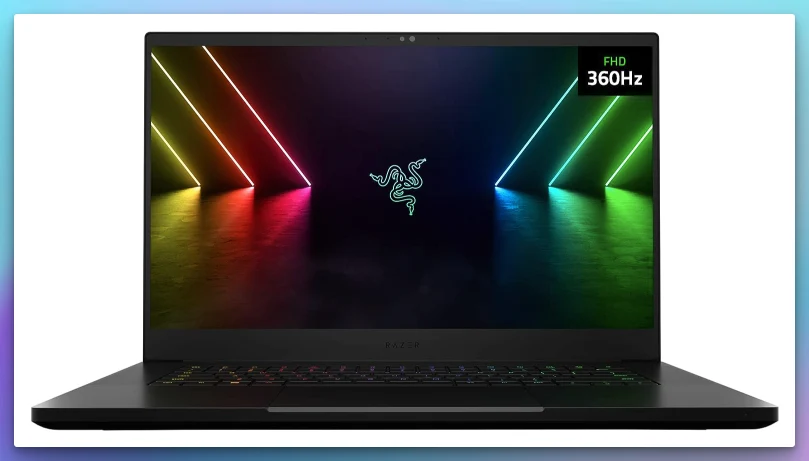
12th Gen Intel 14-Core i7 CPU: At its core lies the 12th Gen Intel 14-Core i7 CPU, a computational powerhouse that effortlessly conquers complex engineering simulations and calculations. It’s the heart of productivity and precision.
NVIDIA GeForce RTX 3080 Ti: The dedicated NVIDIA GeForce RTX 3080 Ti GPU unleashes a new era of graphical excellence. For engineers, this means harnessing the full potential of GPU-accelerated engineering software for unparalleled performance.
15.6” FHD 360Hz Display: The laptop boasts a stunning 15.6” FHD display with a mind-boggling 360Hz refresh rate. It’s not just about speed but the fluidity it brings to engineering design and modeling, making every detail crystal clear.
32GB DDR5 RAM: With a whopping 32GB of DDR5 RAM, multitasking becomes second nature. Engineers can effortlessly switch between resource-intensive applications, keeping their workflow uninterrupted.
1TB PCIe SSD: The 1TB PCIe SSD storage offers lightning-fast data access, ensuring that your engineering projects load quickly. It’s about efficiency, not waiting.
Windows 11: Running on Windows 11, the laptop provides a modern, secure operating system that complements its advanced hardware. It’s a seamless fusion of software and hardware excellence.
CNC Aluminum Build: The laptop’s CNC aluminum build not only ensures durability but also adds a touch of elegance to its design, making it a statement piece for engineering professionals.
Chroma RGB: The Chroma RGB lighting system isn’t just eye candy; it’s a tool for customization and personalization. Engineers can set up their workspace to match their preferences, creating an immersive environment.
Thunderbolt 4: Thunderbolt 4 connectivity ensures high-speed data transfer and versatile connectivity options, perfect for connecting to external devices and peripherals.
In conclusion, the Razer Blade 15 is more than just a laptop; it embodies engineering excellence. Its powerful processor, dedicated GPU, high-refresh-rate display, generous memory and storage, and advanced features make it the ultimate choice for engineering students who demand the best.
This laptop empowers engineers to push boundaries, explore new horizons, and create innovations that shape the future. With the Razer Blade 15, the possibilities are as limitless as the engineering imagination.
Pros:-
Powerful 12th Gen Intel Core i7 CPU: The 12th Gen Intel 14-Core i7 CPU delivers exceptional performance, easily handling the most demanding engineering tasks and simulations.
Dedicated NVIDIA GeForce RTX 3080 Ti GPU: The dedicated GPU provides top-tier graphics performance, essential for GPU-intensive engineering software and tasks.
High-Refresh-Rate Display: The 15.6” FHD 360Hz display offers an incredibly smooth visual experience, ideal for engineering design, modeling, and precise work.
Ample DDR5 RAM: With 32GB of DDR5 RAM, the laptop supports seamless multitasking, ensuring engineers can switch between resource-intensive applications effortlessly.
Swift PCIe SSD Storage: The 1TB PCIe SSD storage ensures rapid data access, reducing software loading times and enhancing workflow efficiency.
Windows 11: Running on Windows 11, the laptop provides a modern and secure operating system that complements the advanced hardware and features.
Durable CNC Aluminum Build: The CNC aluminum build adds durability and offers an elegant and premium design, perfect for engineering professionals.
Customizable Chroma RGB Lighting: The Chroma RGB lighting system allows engineers to personalize their workspace for maximum comfort and style.
Thunderbolt 4 Connectivity: Thunderbolt 4 provides high-speed data transfer and versatile connectivity options, simplifying connections to external devices and peripherals.
Cons:-
High Price: The Razer Blade 15 is a premium laptop, which may be out of budget for some engineering students.
Shorter Battery Life: High-performance components often result in shorter battery life, requiring more frequent recharging for extended use.
Potential for Overkill: The laptop’s extreme performance may be more than necessary for some engineering students, leading to underutilizing its capabilities.
Portability: While sleek, it may not be as portable as smaller and lighter laptops, impacting mobility.
Limited Configuration Options: The laptop may have limited options for customization and upgrades compared to other models.
The Razer Blade 15 offers unmatched power and features for engineering students. Its powerful processor, dedicated GPU, high-refresh-rate display, generous memory and storage, and advanced features make it a top choice.
However, its premium price, potential for shorter battery life, potential for overkill, portability considerations, and limited customization options should be taken into account when evaluating its suitability for individual needs and budget constraints.
It excels in performance and innovation, making it a top-tier option for demanding engineering tasks, but it may not be the ideal fit for all students.
11. SAMSUNG Galaxy Book2 Pro
The SAMSUNG Galaxy Book2 Pro emerges as a sleek and efficient solution for the demands of modern engineering students. With its features and lightweight design, it easily earns its place as one of the best laptops for engineering students.
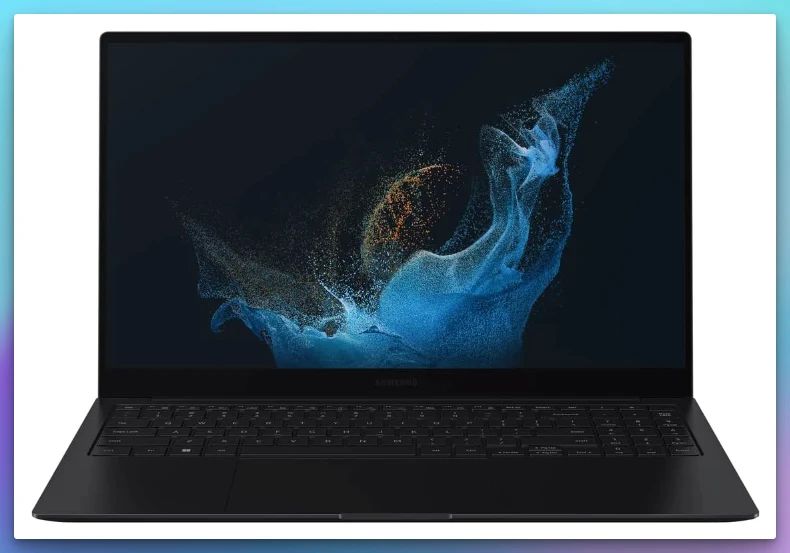
12th Gen Intel Core Processor: At its heart beats the powerful 12th Gen Intel Core Processor. This engineering marvel ensures that complex simulations and data analysis are executed swiftly and accurately.
Evo Certified: The Evo certification is a badge of excellence, indicating that this laptop meets the highest standards of performance and responsiveness. It’s engineered to keep up with the rigorous demands of engineering tasks.
16GB RAM: With 16GB of RAM, multitasking becomes a breeze. Engineering students can seamlessly switch between applications and handle large datasets without a hitch.
512GB Storage: The 512GB storage provides ample space for engineering projects and software. Plus, it ensures quick data access and minimizes waiting times.
Lightweight Design: Weighing in as one of the lightest options in its class, the Galaxy Book2 Pro is engineered for portability. Students can easily carry it between classes, labs, and study sessions.
2023 Model: Being a 2023 model ensures that you’re getting the latest technology, including software updates and hardware improvements.
Graphite Finish: The graphite finish adds a touch of sophistication and enhances durability, making it suitable for the rigors of student life.
In summary, the SAMSUNG Galaxy Book2 Pro is a fusion of power and portability. Its high-performance processor, Evo certification, generous memory, ample storage, and lightweight design make it an ideal choice for engineering students who must balance mobility with computing prowess.
This is not just a laptop; it’s a tool that engineers can rely on to excel in their studies and bring their innovative ideas to life. With the Galaxy Book2 Pro, the future of engineering is in your hands.
Pros:-
12th Gen Intel Core Processor: The powerful 12th Gen Intel Core Processor ensures fast and efficient performance, perfect for handling complex engineering tasks and simulations.
Evo Certified: The Evo certification signifies top-tier performance and responsiveness, meeting the demands of engineering applications and multitasking.
Generous 16GB RAM: With 16GB of RAM, the laptop facilitates seamless multitasking, enabling smooth transitions between resource-intensive applications.
Ample 512GB Storage: The 512GB storage provides sufficient space for engineering projects and software, ensuring rapid data access and reduced loading times.
Lightweight Design: Its lightweight build makes it easy for engineering students to carry between classes, labs, and study sessions, enhancing portability.
Graphite Finish: The graphite finish adds durability and a touch of elegance to the laptop’s design, suitable for the demands of student life.
Cons:-
Integrated Graphics: The laptop relies on integrated graphics, which may not deliver the same level of performance as dedicated GPUs for GPU-intensive engineering tasks.
Limited Storage Capacity: While 512GB is substantial, some engineering students may require more storage for extensive project files and data, potentially necessitating external storage solutions.
Non-Upgradable RAM: The RAM may not be user-upgradable, limiting future expansion options for memory.
Price: It may be relatively pricey for some engineering students on a tight budget.
Limited Customization Options: The laptop may have limited options for customization and upgrades compared to other models.
In conclusion, the SAMSUNG Galaxy Book2 Pro offers power and portability, making it an appealing choice for engineering students. Its high-performance processor, Evo certification, ample memory, and lightweight design are key advantages.
However, its reliance on integrated graphics, limited storage capacity, potential non-upgradable RAM, price, and customization options should be considered based on individual needs and budget constraints. It excels in balancing performance and mobility, making it a strong contender for engineering students seeking a versatile and capable laptop.
12. LG gram SuperSlim (15Z90RT-K.AAB8U1)
The LG Gram SuperSlim (15Z90RT-K.AAB8U1) is a remarkable blend of engineering precision and portability, making it a top contender among the best laptops for engineering students. With its cutting-edge features and sleek design, it’s engineered to meet the demands of the modern engineering curriculum.
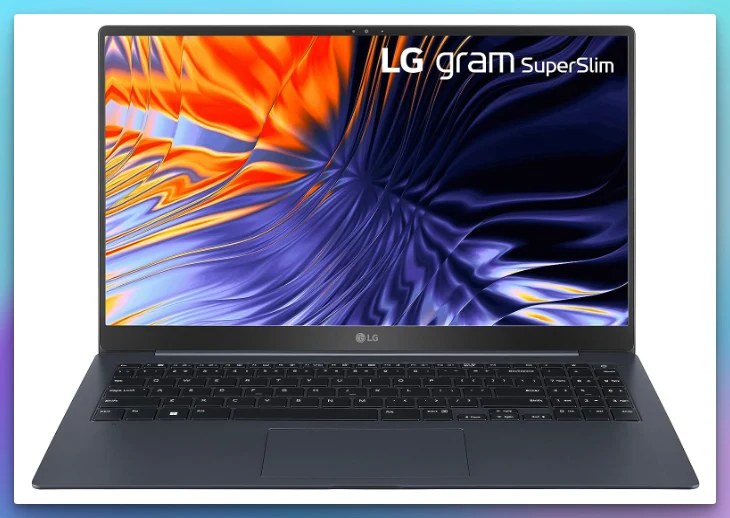
13th Gen Intel Core i7 Evo Platform: At its core lies the 13th Gen Intel Core i7 Evo Platform, a testament to advanced engineering. This processor ensures that engineering tasks, from CAD design to complex simulations, run smoothly and efficiently.
Windows 11 Home: Running on Windows 11 Home, the laptop offers a modern and secure operating system that complements its advanced hardware. It’s a harmonious fusion of software and hardware excellence.
SuperSlim Design: The SuperSlim design is a triumph of engineering, providing a lightweight and ultra-portable laptop without compromising performance. Engineering students can carry it effortlessly wherever they go.
OLED Display: The OLED display offers vibrant colors and true-to-life visuals, a boon for engineering design and detailed analysis. Every pixel is a testament to LG’s commitment to display technology.
16GB RAM: With 16GB of RAM, multitasking becomes second nature. It’s engineered to keep up with the demands of running multiple engineering applications simultaneously.
1TB SSD Storage: The 1TB SSD storage provides ample space for engineering projects and ensures rapid data access, reducing software loading times and enhancing overall workflow efficiency.
Neptune Blue Finish: The Neptune Blue finish adds a touch of elegance and personality to the laptop. It’s not just a device; it’s a statement piece.
In summary, the LG gram SuperSlim (15Z90RT-K.AAB8U1) redefines what’s possible in a slim and lightweight laptop for engineering students. Its powerful processor, OLED display, generous memory, ample storage, and Windows 11 Home operating system make it an exceptional choice.
This is a laptop that engineers can rely on to excel in their studies, from tackling complex simulations to unleashing their creative design prowess. With the LG gram SuperSlim, engineering precision is within reach, wherever your journey takes you.
Pros:-
13th Gen Intel Core i7 Evo Platform: The advanced processor ensures exceptional performance, making it suitable for demanding engineering tasks and simulations.
Windows 11 Home: The modern and secure operating system complements the laptop’s hardware, offering a seamless computing experience.
SuperSlim Design: Its ultra-portable and lightweight design allows engineering students to carry it easily between classes and study sessions.
OLED Display: The OLED display delivers vibrant colors and true-to-life visuals, enhancing the precision of engineering design work.
16GB RAM: With 16GB RAM, multitasking is smooth, and the laptop can handle multiple engineering applications simultaneously.
Ample 1TB SSD Storage: The 1TB SSD storage provides ample space for engineering projects and ensures rapid data access, reducing software loading times.
Neptune Blue Finish: The laptop’s Neptune Blue finish adds an elegant and unique touch to its design, making it stand out.
Cons:-
Integrated Graphics: The laptop relies on integrated graphics, which may not provide the same level of performance as dedicated GPUs for GPU-intensive engineering tasks.
Limited Customization: There may be limited options for customization and upgrades compared to other laptop models.
Price: It may be relatively expensive for some engineering students on a tight budget.
Non-Upgradable RAM: The RAM may not be user-upgradable, limiting future expansion options for memory.
Limited Availability: Availability may vary, making it important to check for local availability before purchase.
In conclusion, the LG gram SuperSlim (15Z90RT-K.AAB8U1) offers a compelling blend of portability and performance for engineering students. Its powerful processor, OLED display, generous memory, and ample storage make it a strong choice.
However, its reliance on integrated graphics, limited customization options, price, and potential non-upgradable RAM should be considered based on individual needs and budget constraints.
It excels in delivering a slim and lightweight design without compromising performance, making it a top pick for engineering students seeking a balance between mobility and computing power.
Operating System Considerations
Windows, macOS, and Linux each have unique strengths when choosing an operating system for engineering applications. The decision often depends on the specific engineering tasks and software requirements.
Let’s delve into the considerations:
Windows:-
Versatile Software Compatibility: Windows enjoys broad compatibility, making it suitable for various engineering applications, including CAD and simulation software.
Widely Used in Industry: Windows is prevalent in engineering, ensuring seamless compatibility with workplace systems.
Graphics Support: Windows often provides robust graphics card support, which is crucial for GPU-intensive engineering tasks.
macOS:-
Graphics and Multimedia Production: MacOS excels in graphics and multimedia applications, making it suitable for engineers involved in multimedia engineering and design.
Unix-Based: macOS is Unix-based, which can be advantageous for developers and engineers who appreciate Unix-like environments for coding and scripting.
Linux:-
Customization and Control: Linux offers unparalleled customization and control, allowing engineers to tailor the OS to their needs.
Open Source Community: Linux benefits from a robust open-source community, offering various engineering tools and applications.
High-Performance Computing (HPC): Linux is often the choice for HPC clusters and supercomputers, making it ideal for engineers working on complex simulations and computations.
In conclusion, the choice among Windows, macOS, and Linux for engineering applications depends on the nature of the work. Windows is versatile and widely used, macOS excels in graphics, and Linux offers customization and HPC capabilities.
Engineers often combine these operating systems based on their diverse needs. The key is to select the one that best aligns with the specific engineering tasks.
📗FAQ’s
Do engineering students need a powerful laptop?
Yes, a powerful laptop is essential for engineering students. Engineering tasks often involve resource-intensive software and simulations, demanding a robust CPU, ample RAM, and a dedicated GPU for optimal performance.
How much should I spend on a laptop as an engineering student?
The budget for an engineering laptop varies but aim for at least $800-$1,200. Investing in a quality laptop ensures it can handle the demanding software and tasks you’ll encounter during your studies.
Is a laptop or desktop better for engineering students?
A laptop offers mobility, which is valuable for students. However, a desktop can provide more power at a lower cost. The choice depends on your specific needs and budget.
Is a gaming laptop suitable for engineering students?
Gaming laptops often have powerful GPUs, making them suitable for engineering tasks. However, ensure they also have sufficient CPU power and RAM.
Is an i5 or i7 better for engineering students?
An i7 processor is preferable for engineering students due to its higher performance capabilities, especially for tasks like 3D modeling and simulations.
How much RAM does an engineering student need?
A minimum of 16GB RAM is recommended, but 32GB or more is ideal for handling multitasking and large engineering projects.
Do first-year engineering students need laptops?
Yes, laptops are valuable tools for first-year engineering students. They facilitate note-taking, research, and running essential engineering software.
How much RAM is needed for an engineering laptop?
As mentioned, 16GB is a minimum, but for optimal performance, consider laptops with 32GB or more RAM.
Is a laptop better than an iPad for engineering students?
Laptops are more versatile for engineering tasks, as they support a wider range of software and provide a physical keyboard. iPads can complement but may not replace laptops.
Should engineering students use Mac or Windows?
The choice between Mac and Windows depends on personal preference and software requirements. Both are suitable, but Windows tends to have broader software compatibility.
Is a MacBook or Windows laptop better for computer engineering?
Both can work, but Windows laptops offer more flexibility in software options. MacBooks excel in design and multimedia work.
Do engineering students need a dedicated graphics card?
Yes, a dedicated GPU is crucial for running engineering software efficiently. Look for laptops with dedicated graphics, especially if you’re into CAD or 3D modeling.
Is Ryzen or Intel better for engineering students?
Both Ryzen and Intel processors can be suitable. Look for higher-end models from either brand with multiple cores for optimal performance.
Which HP laptop is best for engineering students?
HP’s ZBook series offers powerful options tailored for engineering tasks. The ZBook Studio or ZBook Fury are excellent choices with strong performance and durability.
Conclusion
We began this journey acknowledging the unique and demanding requirements that engineering students face. The necessity for a high-performance laptop isn’t a luxury; it’s a fundamental tool to ensure smooth academic progression.
Without the right laptop, students risk lagging, losing valuable project data, and facing immense frustration. The stakes are high, potentially impacting academic success and career trajectory.
But with the comprehensive guide we’ve provided on the “Best Laptops for Engineering Students,” you’re now equipped with the knowledge to make an informed decision. Remember, investing in the right laptop is investing in your future. Choose wisely, and here’s to a seamless, efficient, and successful engineering study experience!

























